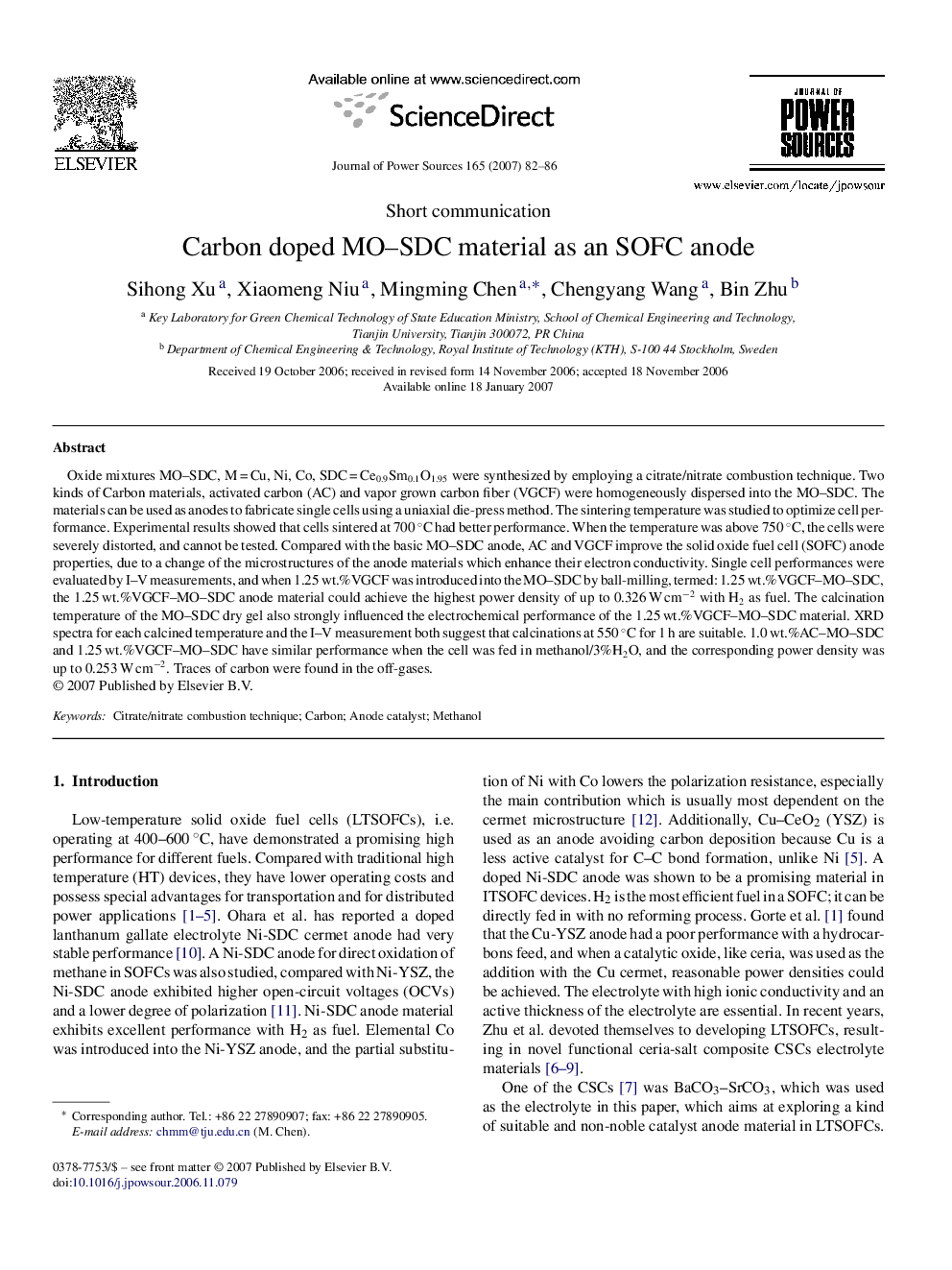| Article ID | Journal | Published Year | Pages | File Type |
|---|---|---|---|---|
| 1291923 | Journal of Power Sources | 2007 | 5 Pages |
Abstract
Oxide mixtures MO-SDC, M = Cu, Ni, Co, SDC = Ce0.9Sm0.1O1.95 were synthesized by employing a citrate/nitrate combustion technique. Two kinds of Carbon materials, activated carbon (AC) and vapor grown carbon fiber (VGCF) were homogeneously dispersed into the MO-SDC. The materials can be used as anodes to fabricate single cells using a uniaxial die-press method. The sintering temperature was studied to optimize cell performance. Experimental results showed that cells sintered at 700 °C had better performance. When the temperature was above 750 °C, the cells were severely distorted, and cannot be tested. Compared with the basic MO-SDC anode, AC and VGCF improve the solid oxide fuel cell (SOFC) anode properties, due to a change of the microstructures of the anode materials which enhance their electron conductivity. Single cell performances were evaluated by I-V measurements, and when 1.25 wt.%VGCF was introduced into the MO-SDC by ball-milling, termed: 1.25 wt.%VGCF-MO-SDC, the 1.25 wt.%VGCF-MO-SDC anode material could achieve the highest power density of up to 0.326 W cmâ2 with H2 as fuel. The calcination temperature of the MO-SDC dry gel also strongly influenced the electrochemical performance of the 1.25 wt.%VGCF-MO-SDC material. XRD spectra for each calcined temperature and the I-V measurement both suggest that calcinations at 550 °C for 1 h are suitable. 1.0 wt.%AC-MO-SDC and 1.25 wt.%VGCF-MO-SDC have similar performance when the cell was fed in methanol/3%H2O, and the corresponding power density was up to 0.253 W cmâ2. Traces of carbon were found in the off-gases.
Keywords
Related Topics
Physical Sciences and Engineering
Chemistry
Electrochemistry
Authors
Sihong Xu, Xiaomeng Niu, Mingming Chen, Chengyang Wang, Bin Zhu,
